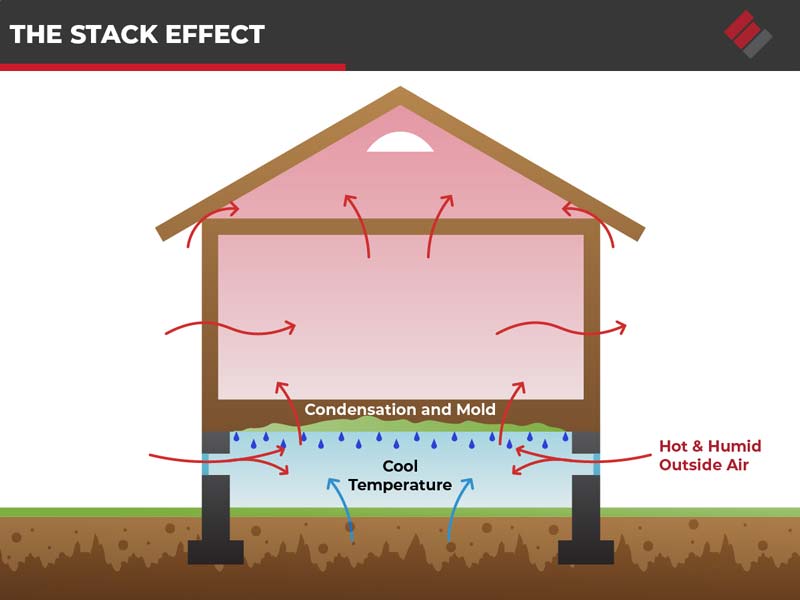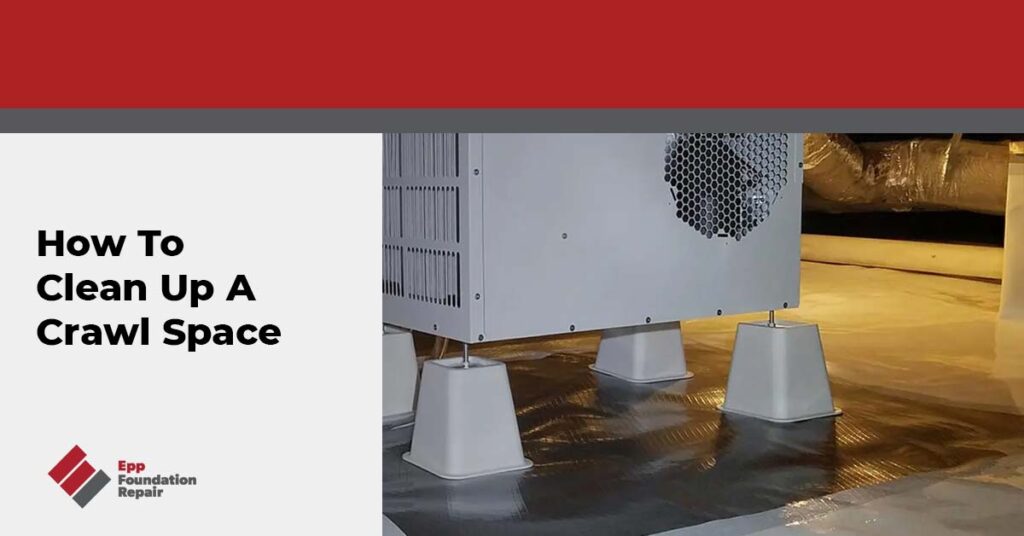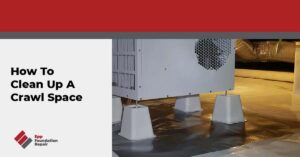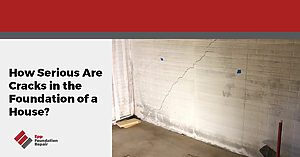If you’re looking for information about how to clean up a crawl space, this article has what you need. We’ll cover what a crawl space is common crawl space problems, how to clean up a crawl space, how you can keep your crawl space dry, and more.
What Is A Crawl Space?
Houses built on crawl space foundations have an area under them that’s just tall enough – usually from 1.5 to 3 feet – to crawl around in. That’s a crawl space.
Crawl space foundations were popular up until the 1960s. While crawl space foundations are still being built, slab foundations are more popular today. Crawl spaces are generally easy to repair and offer easy access to the house’s plumbing and wiring. However, they aren’t without their problems.
Common Crawl Space Problems
The most common crawl space problems are related to moisture. These include – but aren’t limited to – the following:
- Pest infestation – Creepy crawlies love to hang out in crawl spaces. There might be spiders, snakes, or rodents with hazardous droppings. There could also be wood-eating pests like termites.
- Mold – Crawl spaces with excess moisture are usually full of mold. You might be tempted to think that a bit of mold is OK if it’s not inside your home’s living area. The problem is that some of the crawl space air flows into your home’s living area via the stack effect. (See the illustration below) This could cause health problems for anyone living in the house. Check Out our blog post on – How Much Mold In A Crawl Space Is Acceptable?
- Structural damage caused by wood-eating pests – Termites can significantly damage the wooden structures in a crawl space affecting the house’s structural integrity.
- Settled crawl space support posts – The support posts in the crawl space can settle into the soil so they’re no longer adequately supporting the house.

How To Clean Up A Crawl Space
Before we answer this question, we need to clarify what we mean when we say “clean up a crawl space”? Crawl space cleaning could refer to any of the following:
- Are we talking about just getting rid of any debris in the crawl space?
- Are we talking about drying out a wet crawl space?
- Getting rid of pest infestation in a crawl space?
- Cleaning up rodent droppings?
- Removing and replacing wet insulation?
- Installing a vapor barrier?
- Crawl space encapsulation
- Waterproofing with a drain tile system?
In this article, we’re going to consider “clean up a crawl space” to mean all of the above, and we’re going to explain the best way to go about crawl space cleaning. Because most crawl space issues are caused by excess moisture, we need to discuss why crawl spaces get wet.
Why Crawl Spaces Get Wet
Crawl spaces can get wet for various reasons, including:
- Hot, humid air entering a cool crawl space – This happens during the summer. The warm air flows in through the vents and condenses on cooler surfaces.
- High water table
- Cracks in the foundation wall – Even cracks that are so tiny you can’t see them can allow water to enter a crawl space.
- Leaky plumbing
- Poor drainage around the foundation – The most common cause of a wet crawl space is excess moisture in the soil around the foundation. When moisture builds up in the soil around the foundation and can’t drain off, hydrostatic pressure will build up and push water through tiny cracks in the foundation wall. Hydrostatic pressure can even cause a foundation wall to crack and bow inward.
The Best Way To Clean Up A Crawl Space
The best way to clean up a crawl space is to install a drain tile system and then encapsulate the crawl space along with a dehumidifier. That will give you a crawl space that’s clean and dry enough to use as a storage space for things like tools and holiday decorations. Here’s how that works:
Drain Tile System – The Ultimate Way To Clean Up A Crawl Space
The best way to ensure no excess moisture in the soil around your foundation is to install a drain tile system. There are two types of drain tile systems, interior, and exterior. A drain tile system takes any excess moisture in the soil, channels it toward a sump pit, and then ejects it away from the foundation via a sump pump. A drain tile system can be installed in all types of foundations. For more information about how a drain tile system works, see What Is Drain Tile?
Crawl Space Encapsulation
Crawl space encapsulation involves covering the floor and the walls of the crawl space with a thick vapor barrier. This effectively seals off the crawl space from the dirt floor, preventing moisture from entering the crawl space. For more information about crawl space encapsulation, see Is Crawl Space Encapsulation Worth It? Yes!
Why Hire A Pro To Clean Up A Crawl Space
It’s a lot of work to clean up a crawl space if by that we mean doing it correctly by installing a drain tile system and then encapsulating the crawl space. When we clean up a crawl space, we use an experienced crew and get it done quickly.
It can also be dangerous to crawl around underneath a house. As we noted above, crawl spaces are home to things like mold, hazardous rodent droppings, etc. Our crews always wear protective gear, including respirators, before entering a crawl space.
Another reason to hire a pro instead of doing it yourself is the warranty you get when you hire a professional contractor to encapsulate your crawl space. Epp Foundation Repair offers a 25-year warranty on crawl space encapsulation when installed along with a drainage system.
Other Ways To Keep A Crawl Space Dry
You can help keep your home’s crawl space dry by controlling groundwater around the foundation. Some ways to do this include:
- Make sure your gutters aren’t clogged – Gutters clogged with dead leaves and other debris can cause water to spill over the side of the house and soak the soil around the foundation.
- Install downspout extensions, if necessary – Downspouts should release water at least 4 feet from the foundation. If your downspouts are too short, extensions are an easy and inexpensive fix.
- Regrade your yard – The ground should slope away from the foundation so that water doesn’t drain toward and soak the soil around the foundation. A landscaper can help you with this, or you could do it yourself.
- Keep vegetation away from the foundation – While they may look nice, flowers, shrubs, and other vegetation types need water. You don’t want to give yourself a reason to pour water into the soil around the foundation.
If the crawl space under your home needs a “facelift” and you’re in our service area in include Lincoln, Omaha, Grand Island, Kearney, Norfolk and more. contact us today and schedule an evaluation and repair estimate.







